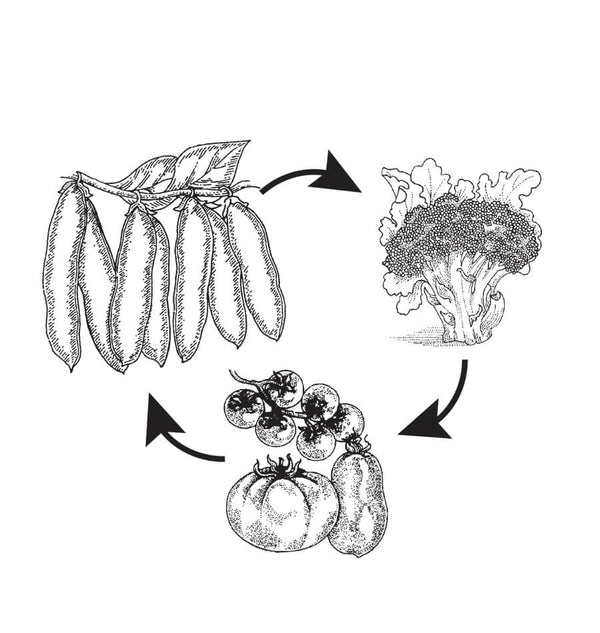Support Food Banks Canada with every dollar spent — 15% sales donated from Black Friday to Cyber Monday.
Time remaining:
Time remaining:

Crop rotation is the practice of not growing plants where similar plants grew the previous year. Crop rotation prevents the build up of pests and diseases and optimizes the use of soil nutrients. Plants from different “families” need different amounts of...
Continue ReadingIn our relatively short growing season, we need to grow most food crops in a fairly intense way. We need to select crops that mature quickly. Some crops, like mescluns and salad greens grow so fast that we can take...
Continue ReadingWith over 1,100 seed varieties to choose from, finding a clear path to the checkout can feel overwhelming. There are beginner mistakes to be made - as well as ways for seasoned gardeners to bite off more than they can chew. Here are Mark's top ten pointers to consider when planting a new garden.
Continue ReadingIt’s September, and much of the garden has been put to bed. As we approach the autumnal equinox, daylight hours begin to recede noticeably. Sunflower heads have been cut for drying, tomatoes have been picked green and brought indoors, and pumpkin fruits...
Continue ReadingHere's our list of seeds to start in August for fall and winter harvests. These fast-growing seeds are cold hardy, and will thrive as the nights get cooler in late August and September. Check the first average frost date for...
Continue ReadingSome vegetable varieties thrive in the cool conditions of fall and early winter, and offered a bit of protection from extreme cold, they can be harvested right through until spring. The best winter gardening varieties actually improve in flavour, texture,...
Continue ReadingWest Coast Seeds has conducted significant research into the companion planting guidelines and has defined the best possible results and reasons for each of our recommendations in our companion planting chart, below are a few thoughtful suggestions for you while planning your garden this year.
Continue ReadingArchaeological evidence suggests peas were grown as food crops in Neolithic Turkey, Syria, and Jordan, and in the Nile valley in Egypt as early as 4500 BC. Dried peas remained an important foodstuff in Europe into the Middle Ages, but some time in the late 1600s eating green peas (as we do today) became a culinary fad in France and England.
Continue ReadingAlthough it’s still cold outside and the days are still short, there are many seeds to start in February indoors. The early start means your seedlings do some essential early development, and when they are transplanted outdoors in the spring,...
Continue ReadingWith Mom’s special day fast approaching, we put together a simple Mother’s Day gift bag you can print at home. Cut it out from the template and follow our instructions for folding and gluing (or taping) into its final shape....
Continue ReadingThese instructions will help you plan your garden, making a cloche greenhouse configuration, choose your covering material and pipe frame. Then they will help you set up your greenhouse and make the very best use of it for great gardening...
Continue ReadingWinter is finally over, and spring has arrived. It’s time to plant seeds! Many gardeners make the mistake of thinking of seed planting as a one time, annual event, as though it was something to get over and done with...
Continue ReadingBack on Day 2 of our Twenty-one Days of Green, we talked about planting chives. We chose chives because they have to be among the very simplest of all herbs to grow from seed. They are extremely useful in the...
Continue ReadingNot so much an official trial, as an effort to grow out each of our sweet peas for comparative study. We grew out fifteen varieties among the other flowers and vegetables at our Kirkland House demonstration garden here in Ladner...
Continue ReadingWith careful planning, seeds can be sown from winter to autumn in order to keep the garden productive pretty much all year round. Here are some tips for seed sowing for the longest harvest window. Determined growers sometimes think of...
Continue Reading